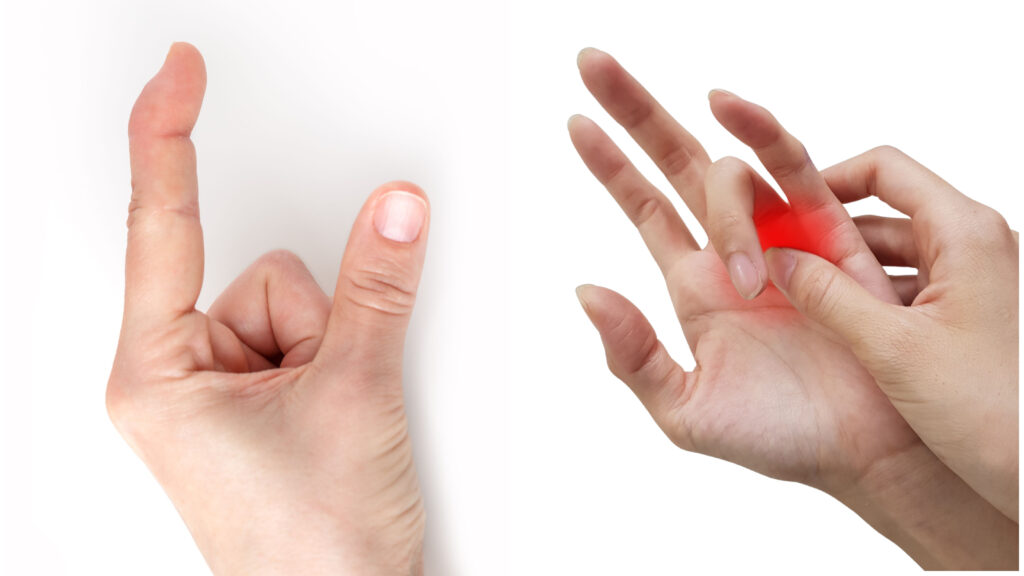By Heidi Tyson, OT, CHT, hand therapy specialist at The Portland Clinic

It’s easy to take our fingers for granted. Whether we’re holding a coffee cup, texting a friend, brushing our teeth or swinging a bat, most of us rarely think about the 10 flexible digits that make all of our daily activities doable — until they don’t, and suddenly, we can’t even tie our shoelaces.
Mallet finger and trigger finger are two common problems that will make you instantly aware of how much you depend on your fingers. Both problems involve a finger getting stuck in a bent position, rendering it temporarily, or permanently, useless. Quick care is important, especially with mallet finger, to avoid permanent disability.
Mallet finger (aka hammer finger or baseball finger)
In this injury, the top part of a finger or thumb suddenly gets stuck in a perpendicular position, like the head of a mallet or hammer. This can happen if you jam your finger, or if a baseball strikes your fingertip and bends it too far forward, or even if you put too much force on a finger while making your bed. Whatever the cause of the over-bending, the effect is a ruptured tendon at the top knuckle, which prevents the finger from straightening. You may be able to push it straight with your other hand, but it can’t straighten on its own.
If this happens to you, don’t wait to get treated. Mallet finger is a seriously time-sensitive issue that will not get better on its own. Treatment must begin within the first three to four days of injury, or the bent finger may be stuck permanently.
Treatment involves wearing a custom-molded splint full time, day and night, for eight weeks. The timing and fit of the splint are crucial to hold the finger in the right position; bending it at all during the first eight weeks can prevent or set back healing. If you miss the early-treatment window, surgery may be an option, but isn’t always effective.
Trigger finger
A finger that’s “triggering” may feel like it suddenly snaps or pops into a bent position, at a lower knuckle, and gets stuck there before snapping back. That snapping and sticking is caused by inflammation, rather than a rupture, in the tendon. The inflamed tendon, which normally glides smoothly through a sheath in the knuckle to bend or straighten the finger, gets stuck in transit like a knotted thread being pulled through a needle.
Any activity that puts stress on a finger joint can cause inflammation, whether it’s working at a job that involves repetitive gripping, or simply carrying in heavy grocery bags. In the early stages of trigger finger, the stuck finger releases on its own. In more advanced stages, you need to use your other hand to release it. The more a finger triggers, the worse the inflammation becomes. At its most severe, a finger can become locked in the bent position. Don’t wait for that to happen before you seek treatment.
While less urgent than mallet finger, trigger finger has the best outlook for recovery if it’s treated early. The optimal treatment is a splint that lets the tendon rest while still allowing the finger to bend and function, paired with therapeutic exercises to help maintain movement — without triggering — as it heals. To prevent recurrence, an occupational therapist also can teach you about which activities to avoid during healing, as well as specific preventive strategies related to your daily activities. For more severe trigger finger, cortisone shots or surgery may be needed to straighten things out.
From the mundane to the sublime, your wonderful, wiggly fingers are essential to just about everything you do. Whether you’re typing a blog or playing a Beethoven sonata, it’s all in the fingers — so if something goes wrong, do everything you can to protect and preserve their function. A primary care provider or hand therapy specialist can give you a hand — the sooner the better.


